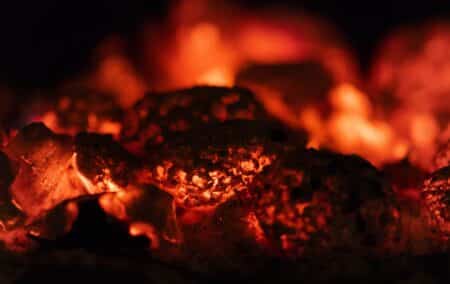If you had to name one substance above all others that has delivered the human race into long life, good health and prosperity, it would be coal.
Coal was the foundation of the Industrial Revolution, which began in England in the 18th Century and which changed the world for the better, at least doubling life-expectancy. Unfortunately, coal was also highly polluting and damaged many people’s lives, including young children’s.
Coal was in the news last week when it was announced that, at last, all six units of the gigantic Medupi coal-power station in Limpopo were in operation. This is good news but it is also controversial. It has provoked some sensible comment and much nonsense.
The history of Medupi is not a happy one. In 1994, it was clear that South Africa would soon have to build more power stations. In the election campaign the ANC promised 6% economic growth (perfectly reasonable).
This would have required at least 6% growth in electricity supply, and we should rapidly have run out of electricity unless new stations were built. The ANC never produced 6% growth, but even the more modest actual growth required new stations. None were built. Both the ANC government and Eskom were to blame.
Both buried their heads in the sand and hoped that somehow more electricity could be produced with a magic wand. (The white managers at Eskom at the time were even more wilfully stupid about this than the black ones.) We ran out of electricity in 2007, causing permanent damage to the economy.
Panic set in
Just before that, in about 2004, panic set in and the ANC ordered more stations to be built in a hurry. Eskom chose to build two enormous coal stations, Medupi, in Limpopo, and Kusile, near Witbank in Mpumalanga.
Things went wrong from the start and never recovered. Instead of using existing, proven station designs – such as that of the excellent Mathimba station in Limpopo – they chose new, exotic designs on a colossal scale; the boiler houses at Medupi are 130 metres high, just six metres short of Cheops, the highest pyramid.
You can squeeze more efficiency out of a power station (more electricity per ton of coal) if you increase steam pressure and temperature, but this comes at the cost of more expensive boiler materials; they decided to do so nonetheless. The contracting was hurried, inefficient and corrupt, with a lot of ‘this is Africa’ stuff going on. (‘If you want us to give you the contract, you must be nice to us.’)
Because of lack of skills and poor management, the workmanship in construction, especially on the boilers, was shoddy. Much of the welding was substandard. The unions gave grief and had many strikes.
Construction began in 2007, and should have been completed in about 2015. The budget cost was about R80 billion; instead it will cost about R135 billion. Some commissioning tests could not be done. The last unit to be commissioned should be running at 100% capacity; it isn’t. Anyway, all units are running now.
This should be a great help to our creaking electricity system. Medupi has six units of just under 800 MW each, giving a total of 4 800 MW. Total maximum demand for the whole country now is about 31 000 MW, so Medupi at full power could supply 15% of South Africa’s electricity. It is said to have a life of 50 years. I doubt it will prevent all blackouts but will surely reduce them.
Good points about Medupi
There are many good points about Medupi. It is built on a massive coalfield in Limpopo, and the coal will be delivered from the mine to the station by conveyor belt, which is as it should be. To save water, it uses dry cooling, a technology in which South Africa leads the world. Instead of the condensers being cooled by cooling towers using evaporation of fresh water, its condensers will be cooled by air, using huge radiators, like giant versions of those in front of your motor car engine.
Coal is the most polluting of fuels, but Medupi has measures for reducing its pollution. The exhaust gases go through special bag filters that reduce smoke (particulates) by 99%. Nitrogen oxides, which always occur with combustion in air, will be reduced by special burners. There is no flue gas desulphurisation (FGD) to remove sulphur oxides but there is provision for FGD to be fitted later. (FGD is expensive to build and even more expensive to operate, requiring the continuous supply and removal of huge amounts of lime.)
Medupi will release vast amounts of CO2, a wonderful, clean, life-giving gas. Good for it. Increasing CO2 will stimulate plant growth and have little if any effect of the climate.
But a prevailing global superstition, defying science, defying all the evidence to the contrary, believes that rising CO2 will cause dangerous climate change. It decrees that fossil fuels, especially coal, must be banned and replaced with useless, totally unreliable but very expensive solar and wind.
Will these powerful idiots be able to prevent Medupi serving the country for the next 50 years?
[Image: Pawel Czerwinski on Unsplash]
The views of the writer are not necessarily the views of the Daily Friend or the IRR
If you like what you have just read, support the Daily Friend

